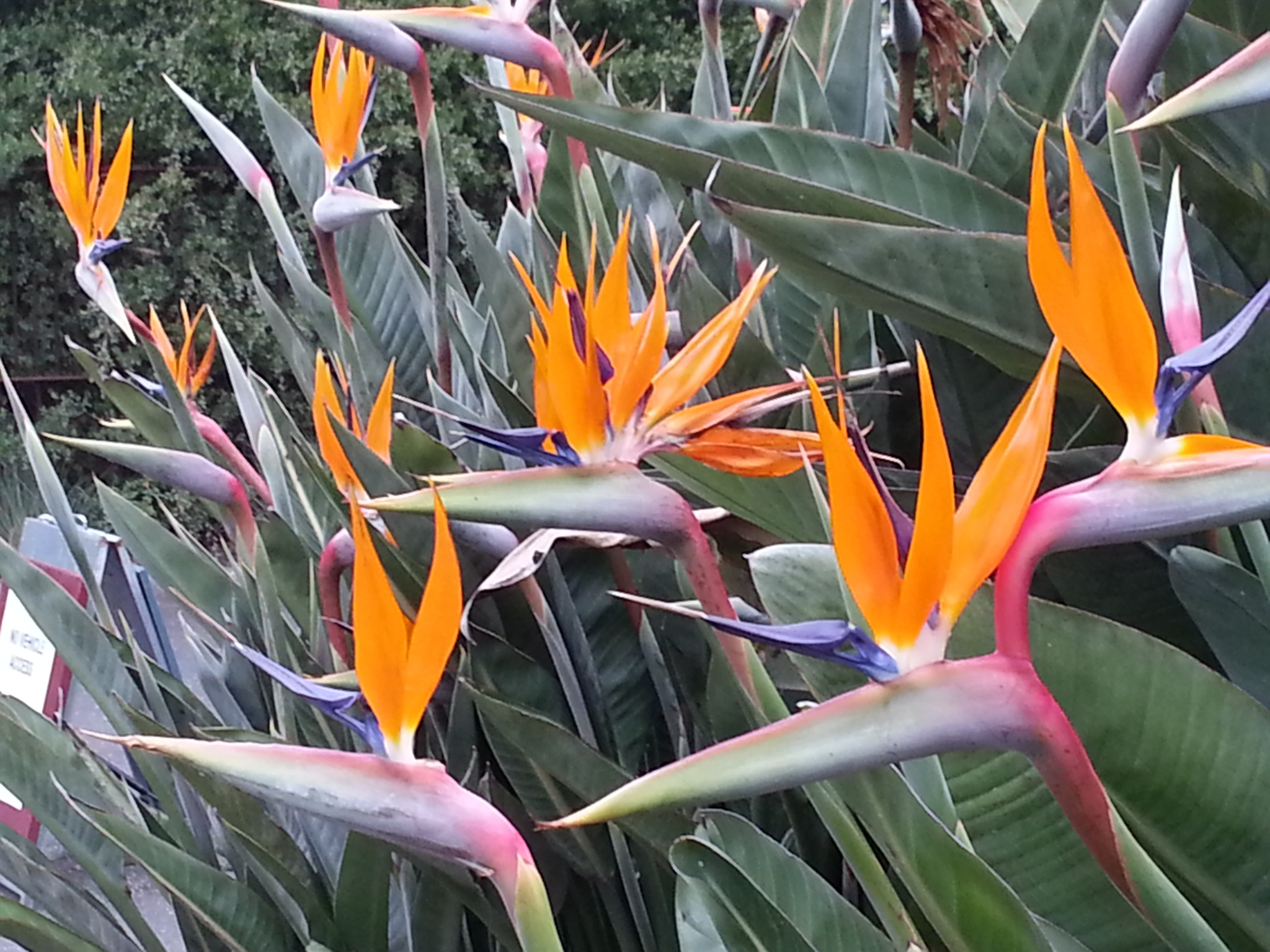
Commemorating Charlotte of Mecklenburg-Strelitz (1744–1818), Queen to George III of England.
Perennial often palm-like herbs, sometimes with trunk-like stems. Leaves in 2 ranks, like those of the banana. Flowers bisexual, irregular, bird-like, emerging from a boat-like spathe, producing copious nectar. Sepals 3, narrow. Petals 3, 1 small, 2 united and arrow-like with a groove containing the 5 stamens and style. Fruit a 3-chambered capsule; seeds hard, black and spherical with orange hairy arils.
Grown for the spectacular bird-like flowers, resembling the African Crane, often used for the vase and S. reginae in the cut flower industry. They grow naturally on riverbanks, beside estuaries and in forest clearings.
Pollination is by birds which land on the swivelling flower axis, the stamens rubbing on the plumage.
Suckers, division and seed.
S. reginae for cut flowers.
Spathes 1-5; petals unequal; fertile stamens 5; aril orange.
4-5 species in coastal eastern Africa from the Cape to Transvaal.
Mooore & Hyppio (1970).
Source: (2005). Strelitziaceae. In: . Horticultural Flora of South-eastern Australia. Volume 5. Flowering plants. Monocotyledons. The identification of garden and cultivated plants. University of New South Wales Press.
